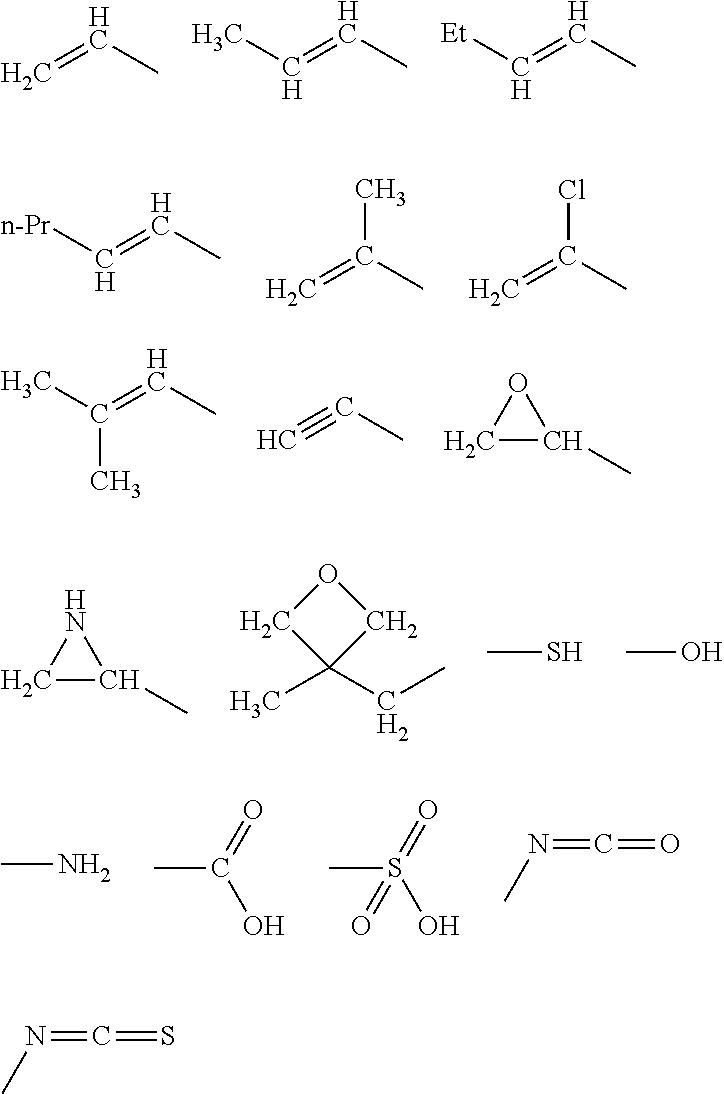Polarizing element, circularly polarizing plate, and image display device
a technology of circular polarization and image display, which is applied in the direction of polarizing elements, identification means, instruments, etc., can solve the problems of insufficient flexibility and achieve the effect of excellent anti-reflection function
- Summary
- Abstract
- Description
- Claims
- Application Information
AI Technical Summary
Benefits of technology
Problems solved by technology
Method used
Image
Examples
example 101
[0229]The following liquid crystalline composition 1 was continuously applied onto the obtained alignment film 1 using a wire bar of #11 to form an applied film 101.
[0230]The applied film 1 was heated at 140° C. for 90 seconds and was cooled to room temperature. Subsequently, the applied film 1 was heated at 80° C. for 60 seconds and cooled again to room temperature. Thereafter, the film was irradiated under an irradiation condition of an illuminance of 28 mW / cm2 for 60 seconds using a high-pressure mercury lamp to create an anisotropic light-absorbing film (a thickness of 2,000 nm) on the alignment film 1. In this manner, a polarizing element of Example 101 was created. The degree of alignment of the obtained polarizing element 101 is shown in Table 1.
[0231]In addition, the anisotropic light-absorbing film was peeled from the polarizing element of Example 101, and the degree S of alignment was measured by the above-mentioned method. The degree S of alignment of the anisotropic ligh...
example 114
[0238]The following composition 1 for forming an oxygen shielding layer was continuously applied onto the anisotropic light-absorbing film of Example 113 with a wire bar of #17 and dried at 60° C. for 5 minutes to create a polarizing element of Example 114 in which the oxygen shielding layer was formed on the anisotropic light-absorbing film.
[0239]In addition, the anisotropic light-absorbing film was peeled from the polarizing element of Example 114 and the degree S of alignment was measured by the above-mentioned method. The degree S of alignment of the anisotropic light-absorbing film is shown in Table 1.
Composition 1 for forming oxygen shielding layerModified polyvinyl alcohol7parts by massWater72parts by massMethanol21parts by mass
example 115
[0240]The following composition 2 for forming an oxygen shielding layer was continuously applied onto the anisotropic light-absorbing film of Example 113 with a wire bar of #5 and dried at 60° C. for 5 minutes to create a polarizing clement of Example 115 in which the oxygen shielding layer was formed on the anisotropic light-absorbing film.
[0241]In addition, the anisotropic light-absorbing film was peeled from the polarizing element of Example 115 and the degree S of alignment was measured by the above-mentioned method. The degree S of alignment of the anisotropic light-absorbing film is shown in Table 1.
Composition 2 for forming oxygen shielding layerCompound BA-1 (below)29parts by massPolymerization initiator IRGACURE 8191part by mass(manufactured by BASF)Ethanol70parts by mass
Creation of Circularly Polarizing Plate
[0242]A pressure sensitive adhesive (SK-2057, manufactured by Soken Chemical & Engineering Co., Ltd.) was applied onto the side of the anisotropic light-absorbing film...
PUM
| Property | Measurement | Unit |
|---|---|---|
| refractive index nave | aaaaa | aaaaa |
| refractive index n550 | aaaaa | aaaaa |
| refractive index | aaaaa | aaaaa |
Abstract
Description
Claims
Application Information
 Login to View More
Login to View More - R&D
- Intellectual Property
- Life Sciences
- Materials
- Tech Scout
- Unparalleled Data Quality
- Higher Quality Content
- 60% Fewer Hallucinations
Browse by: Latest US Patents, China's latest patents, Technical Efficacy Thesaurus, Application Domain, Technology Topic, Popular Technical Reports.
© 2025 PatSnap. All rights reserved.Legal|Privacy policy|Modern Slavery Act Transparency Statement|Sitemap|About US| Contact US: help@patsnap.com



